Financial Dimensions
With the complete redesign of the financial dimensions and chart of account structure in Microsoft Dynamics® AX 2012, you may be wondering what all the commotion is about. The new framework is very flexible and introduces many new concepts and features that give you greater control and flexibility over your financial information.
In this 6-part blog, I will explore my top five, favorite, cool new features for financial dimensions in AX 2012 and show you how to use them.
This first blog entry will explore at a high level what the features are and their benefits.
5. System vs. Custom Dimensions
Coming in at number five is the use of system defined dimension values. In earlier releases of AX, you could only define and maintain a custom list of financial dimension values. This could lead to redundant data and duplicated efforts and maintenance. For example, you currently maintain a list of departments in the Human resources module and in the General ledger. With AX 2012, you can now create a system-defined dimension that allows you to “link” the values to an existing table.
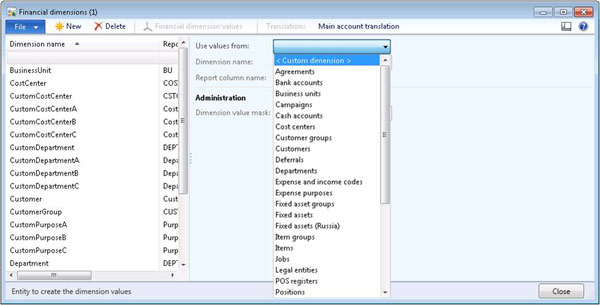
Example of the Financial dimensions form with system defined dimensions.
4. Segmented Entry Control
Next up is the segmented entry control. In earlier releases, the financial dimensions were displayed as separate fields and were often times located on a completely separate tab. In AX 2012, the new segmented entry control simplifies the data entry of financial dimension providing visual indicators to the user about what to enter next, and providing dynamics lists of available values.
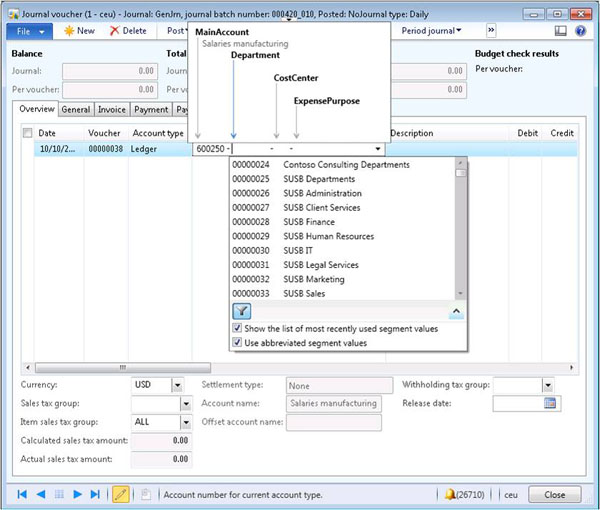
3. Account Structures
Coming in at number three, account structures have completely turned the chart of accounts upside down. Giving you the flexibility to decide which dimensions you want to track and how many dimensions you want to track. In earlier releases, the chart of accounts was, let’s say “flat”. There was no segmentation and no flexibility in how many dimensions you could have without purchasing additional licenses and no matter what you were always stuck at ten. The new framework puts it all in your hands and provides the flexibility for an unlimited number of financial dimensions.
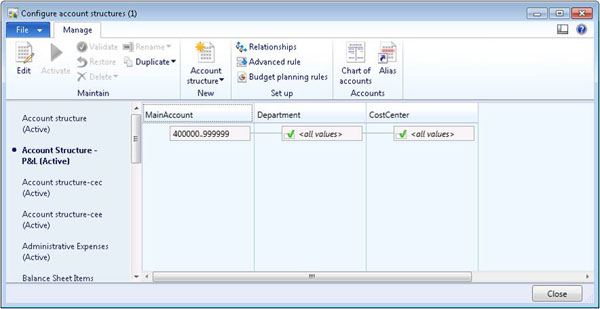
Example of an advanced rule in the Configure account structures form.
2. Advanced Rules
Advanced rules come in at number two for me because they take the account structures to the next level. In my opinion, there really is no comparison for this feature in earlier releases. The advanced rules allow you to take the financial dimensions and segmentation that you want to define for your chart of accounts and make it more specific to your business and your chart of accounts. In earlier releases when you had a financial dimension, it was all or nothing. With advanced rules, you can “turn dimensions on and off”.
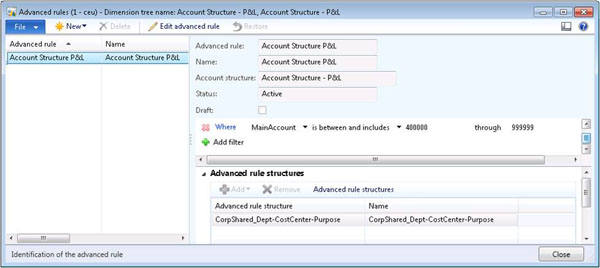
Example of an advanced rule in the Advanced rules form.
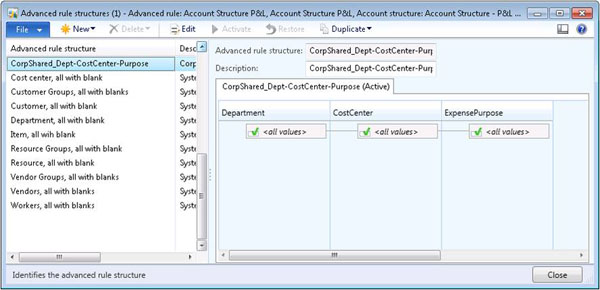
Example of the advanced rule structure in the Advanced rule structures form.
1. Organization Hierarchy
Organization hierarchy integration with the account structure is by far my favorite new feature in AX 2012. Again, there really is no comparison. However, if I had to compare, I would say that this feature is the dimension set hierarchies feature replaces and has made far less stressful (and pretty at the same time). With this new feature, you can create an organization hierarchy that models your business and financial accounting structure. Then you can apply that hierarchy to the account structure. All the rules about combinations are automatically inherited and the hierarchies are date effective, meaning if you want to change the structure next year you can do so.
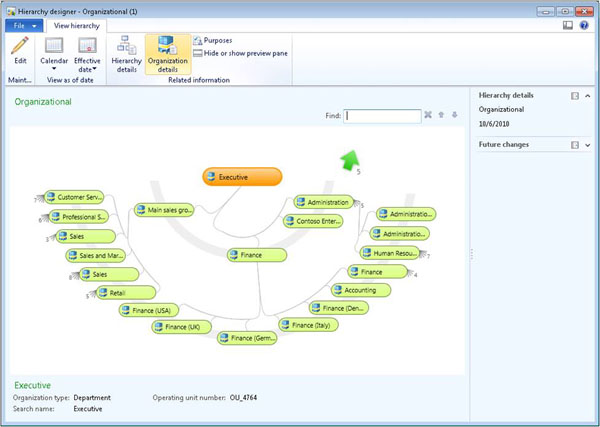
Example of an organization hierarchy in the Hierarchy designer form.
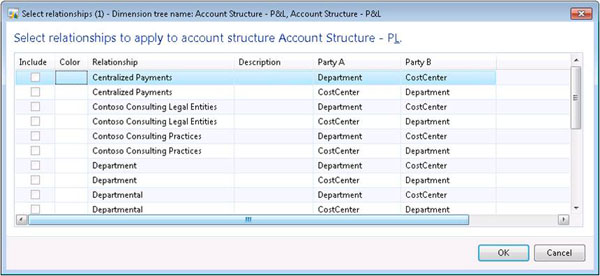
Example of using the Relationships button on the Account structure form to link a hierarchy to an account structure.
![]()

 RSMUS.com
RSMUS.com